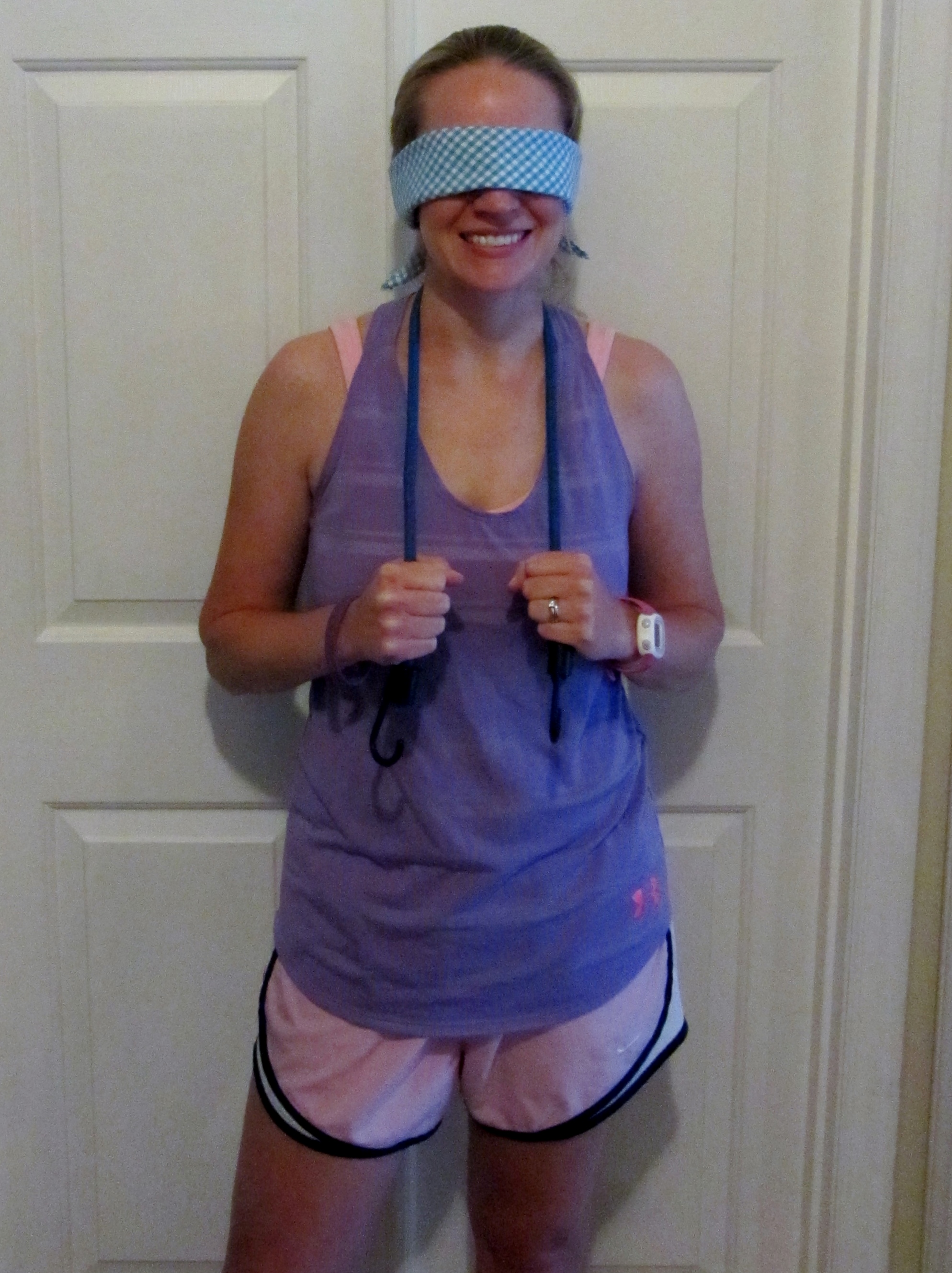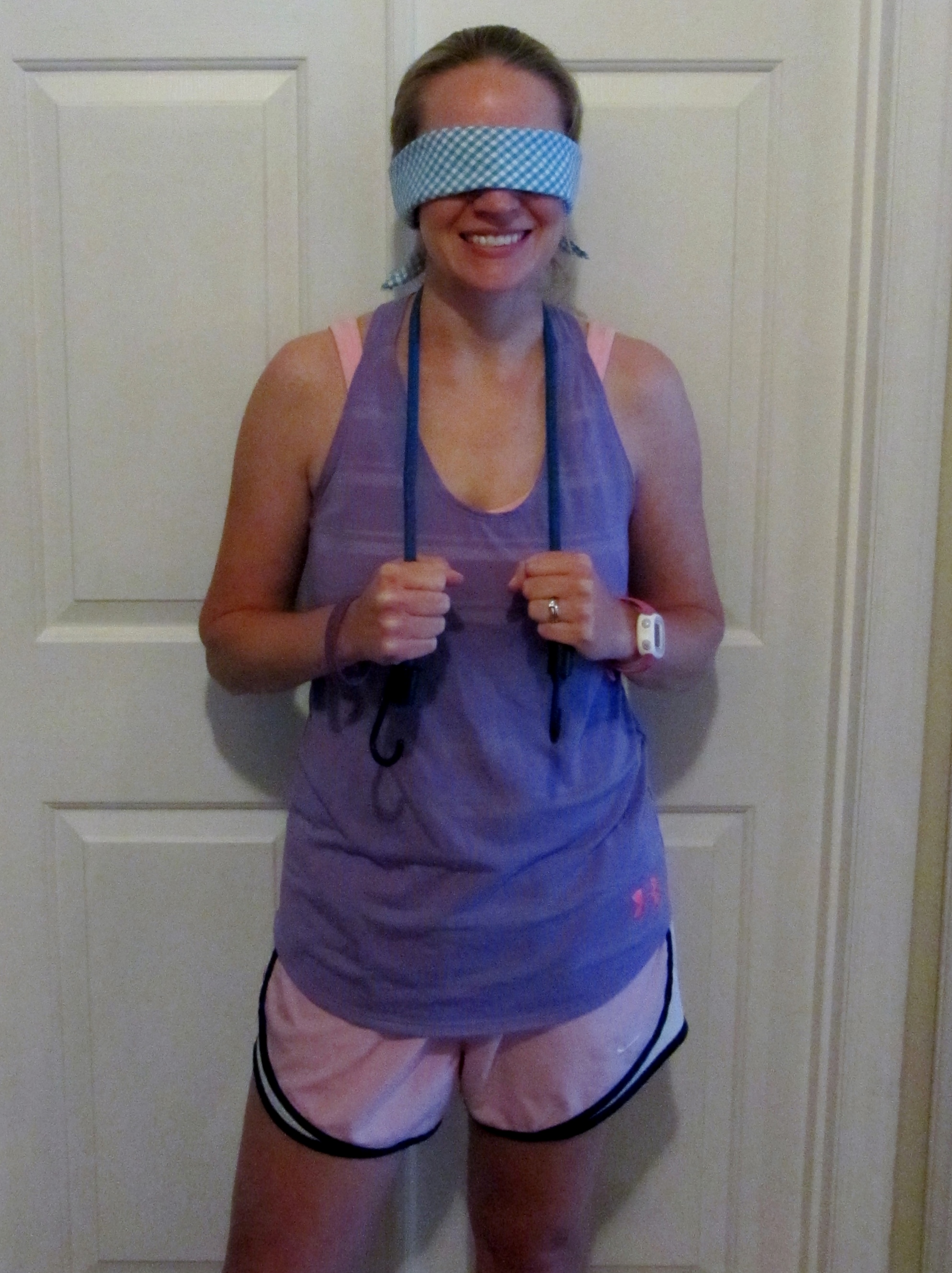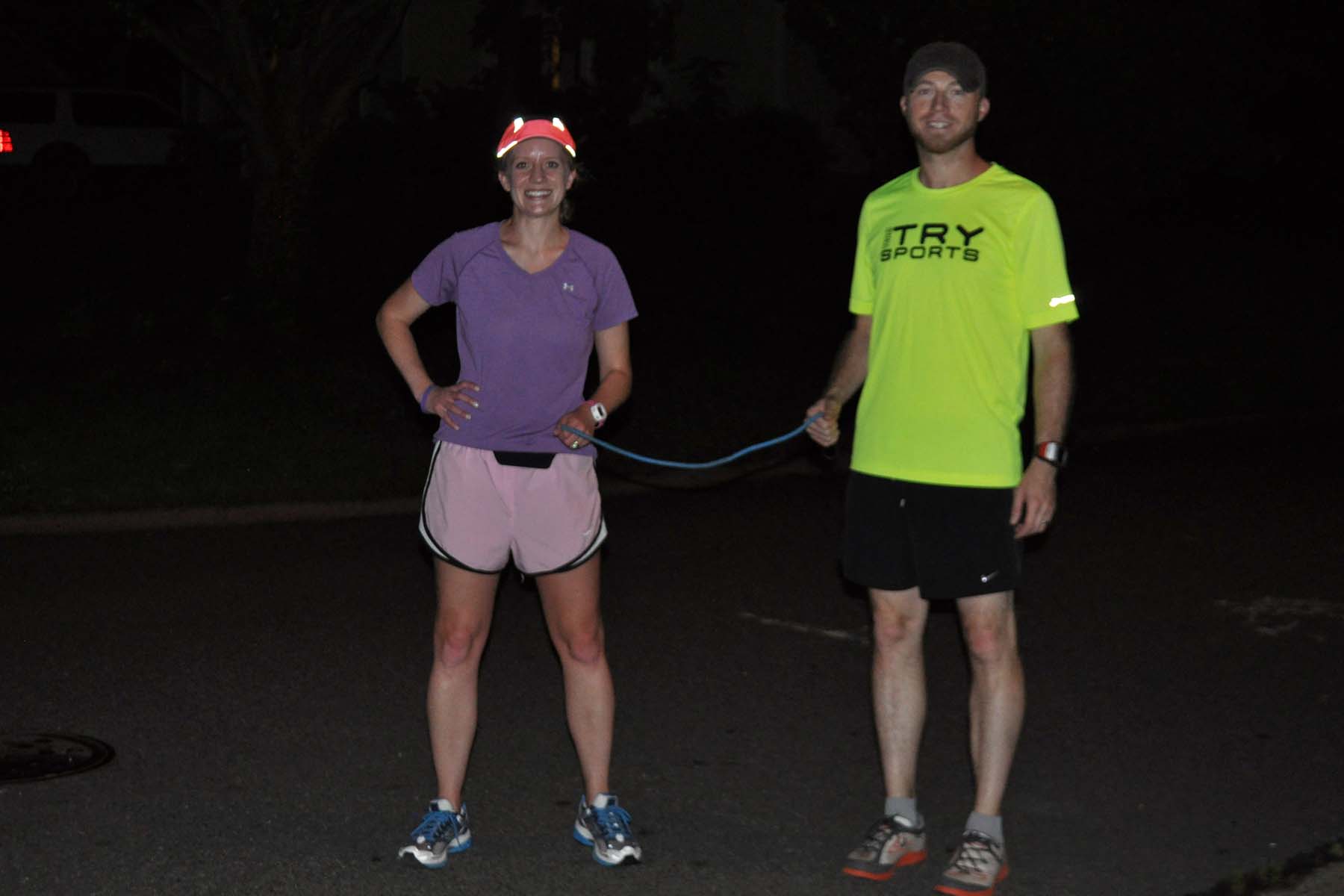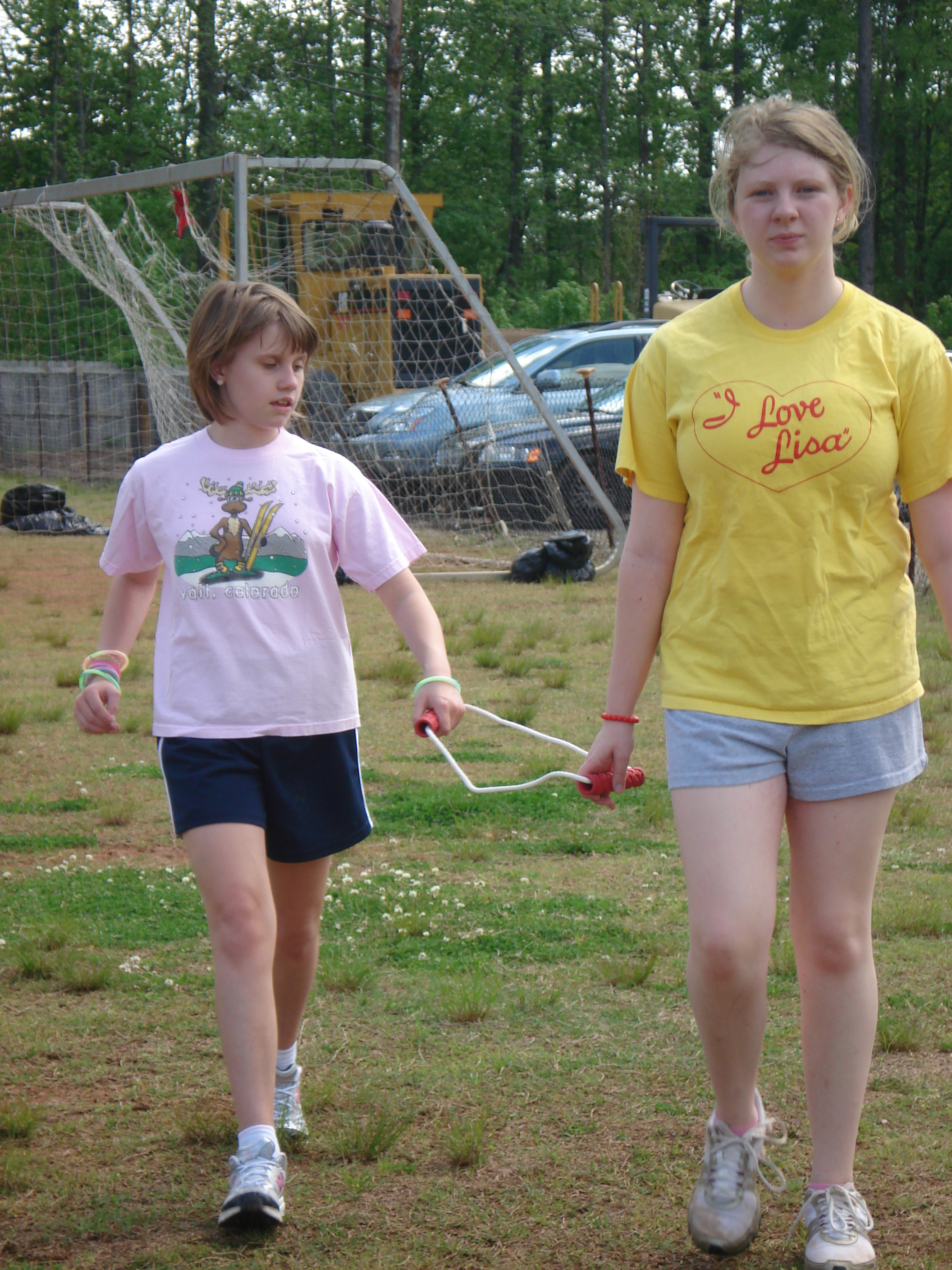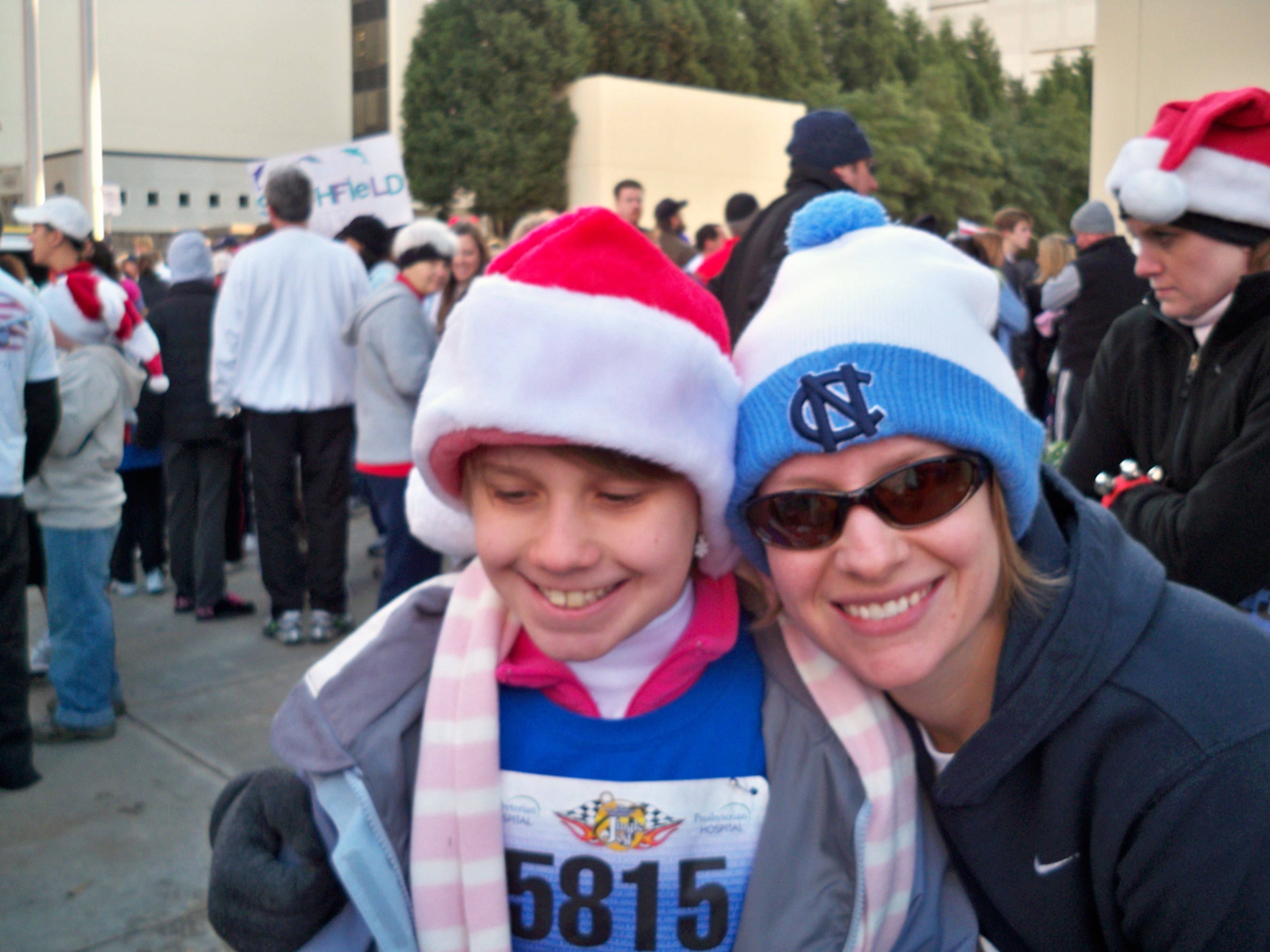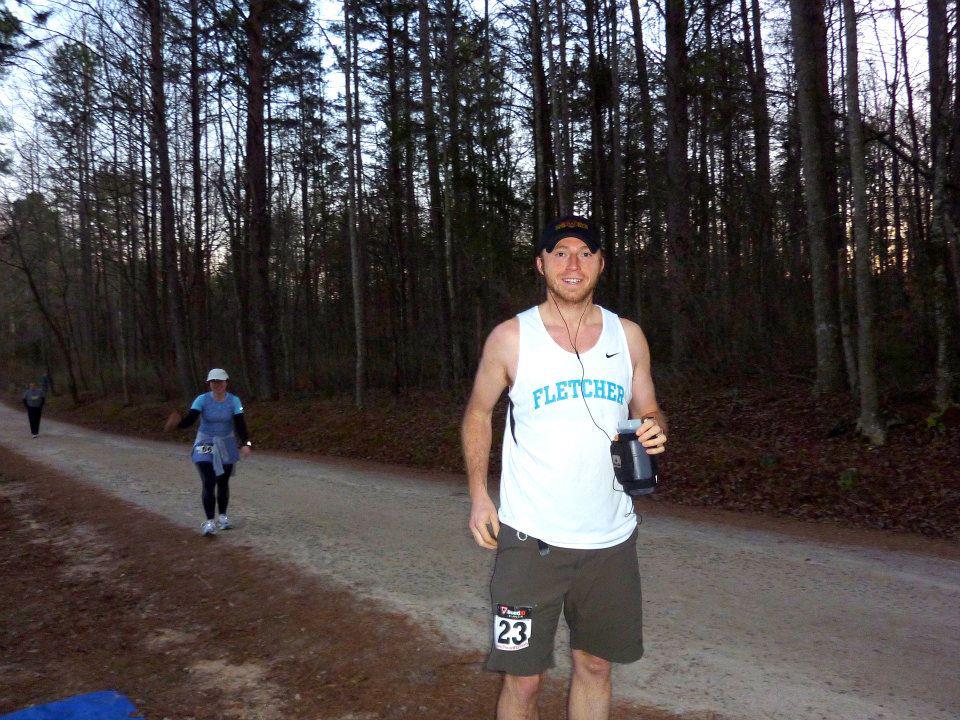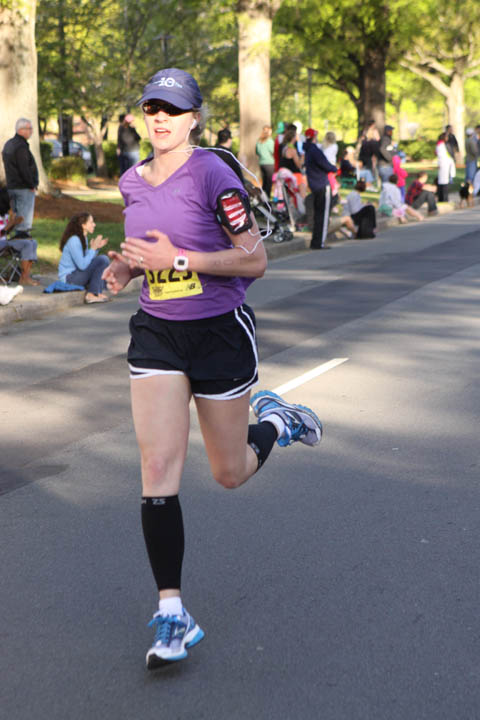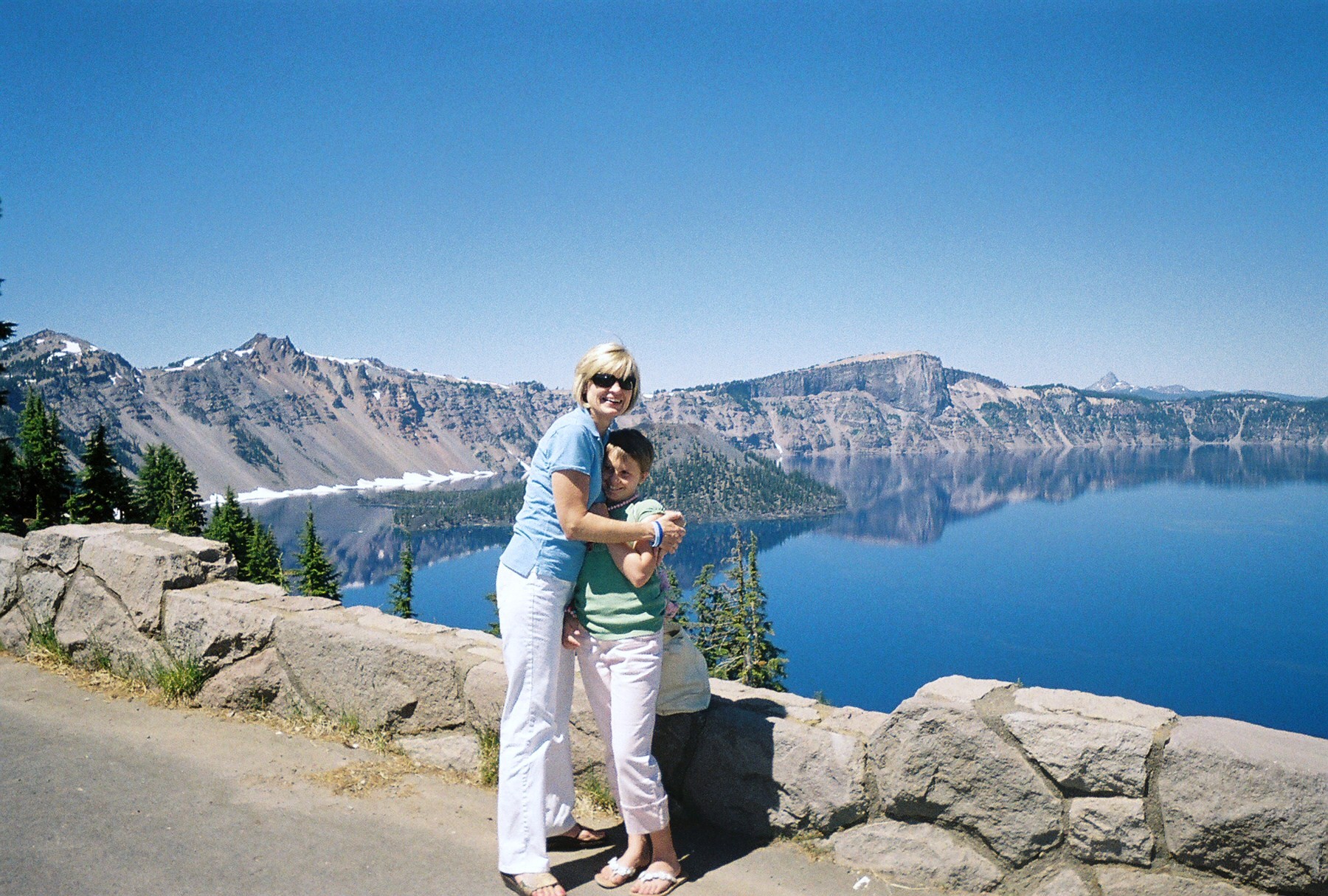Training run number five got off to a late start last night, because my sighted guide, Andrew Swistak, and I both wanted to watch aerialist Nik Wallenda attempt his tightrope walk across a gorge near the Grand Canyon.
Nik Wallenda and his family of aerialists, acrobats and daredevils are famous because of the risks they take and the feats they attempt in order to entertain an audience.
I remember how my stomach dropped when I saw people scrambling like ants on a log up the razor-thin switchbacks to Angel’s Landing in Utah’s Zion Canyon on a hiking trip in 2009. I know I’ll never try anything even close to the performances that are ordinary for someone like Nik Wallenda.
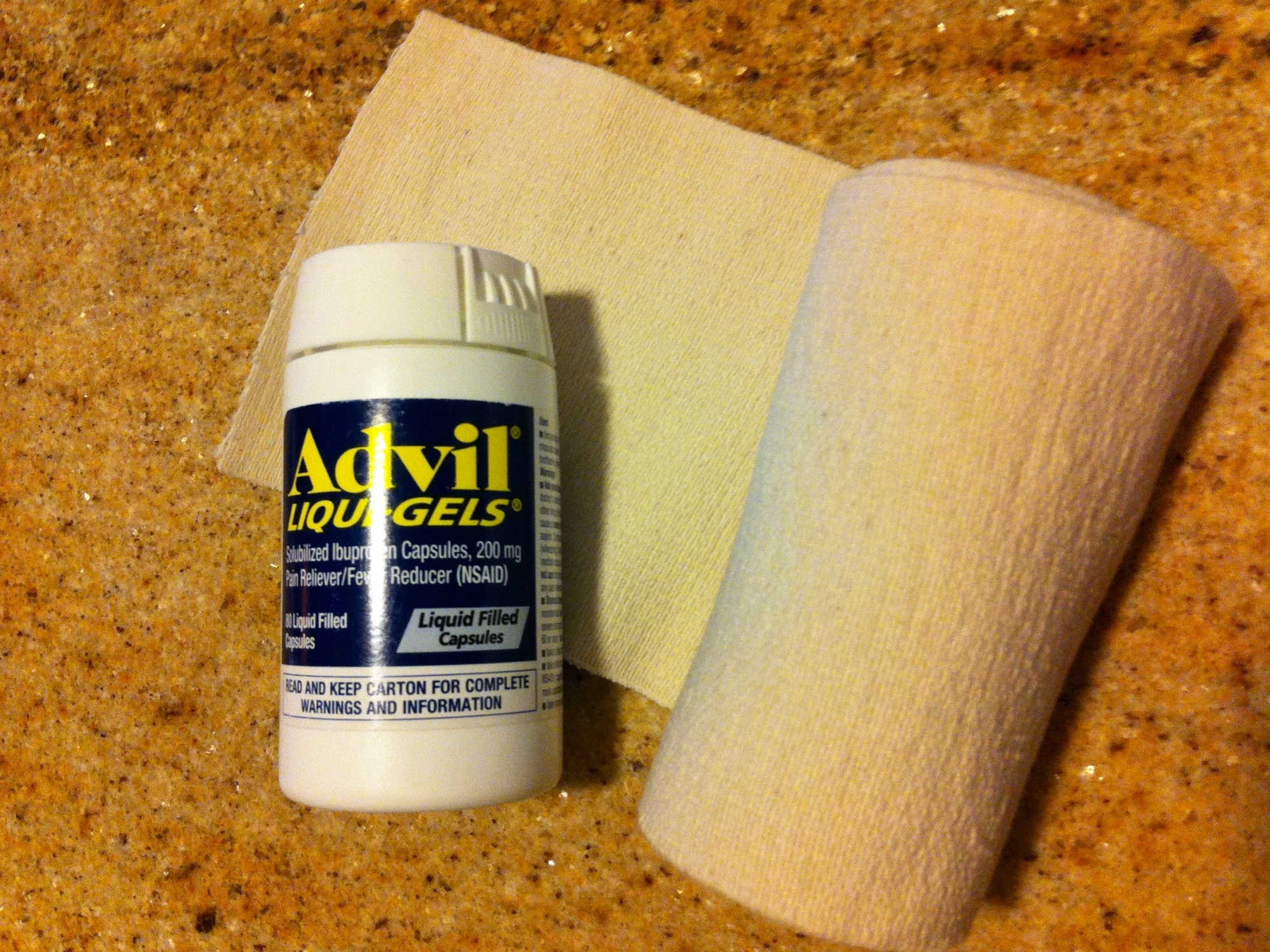 But every time I pull a blindfold over my eyes and join my sister in her world of darkness, I take a risk to gain an audience and honor my sister. I realize that the two situations are not the same. I know I’m not risking my life. I’m never alone, and Andrew was born to lead the blind on the run. But all of the radiology imaging tests and physical exams from over the years don’t lie, and in case I dare forget, the auditory popping of my ankles serves as a daily reminder. Soccer – my first love – shredded the ligaments in my ankles, and I’m running on flat tires. So when I mistimed a curb jump and felt my left ankle go left, then right, then left again the first time I ran blind, on June 5, I suffered a setback.
But every time I pull a blindfold over my eyes and join my sister in her world of darkness, I take a risk to gain an audience and honor my sister. I realize that the two situations are not the same. I know I’m not risking my life. I’m never alone, and Andrew was born to lead the blind on the run. But all of the radiology imaging tests and physical exams from over the years don’t lie, and in case I dare forget, the auditory popping of my ankles serves as a daily reminder. Soccer – my first love – shredded the ligaments in my ankles, and I’m running on flat tires. So when I mistimed a curb jump and felt my left ankle go left, then right, then left again the first time I ran blind, on June 5, I suffered a setback.
Soccer’s taken me down this road before, though. As I joked to someone today, I didn’t have a clue what to do when I injured my Achilles tendon in 2011, but I can medicate and elevate and ice and tape an ankle like a pro. Andrew and I can cut our runs short, as we did last night (we logged just 2.61 miles after watching a teary Nik Wallenda twinkle-step the last few feet of his journey). And if all else fails, we can succumb to my ankle and take a short break. We’ve accomplished more in five runs together than I ever dreamed possible.
And like I’ve said before – no matter what happens, when race day arrives, we’ll be ready.
Because it’s for Taylor.
I will run the Thunder Road Half Marathon blindfolded to support gene therapy co-funded by Taylor’s Tale at the University of North Carolina Gene Therapy Center. Donations to this cause are 100 percent tax-deductible. To support my run and our fight to develop treatments for Batten disease and other genetic diseases, click here.

